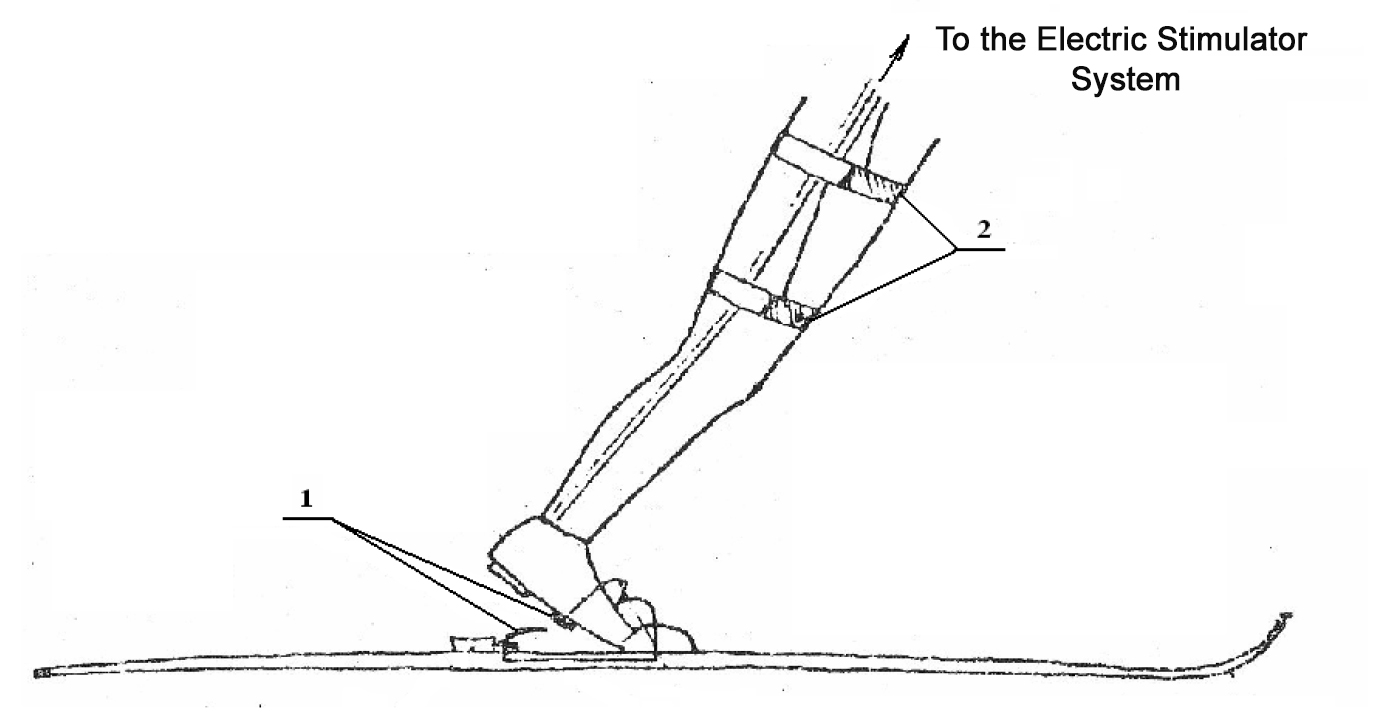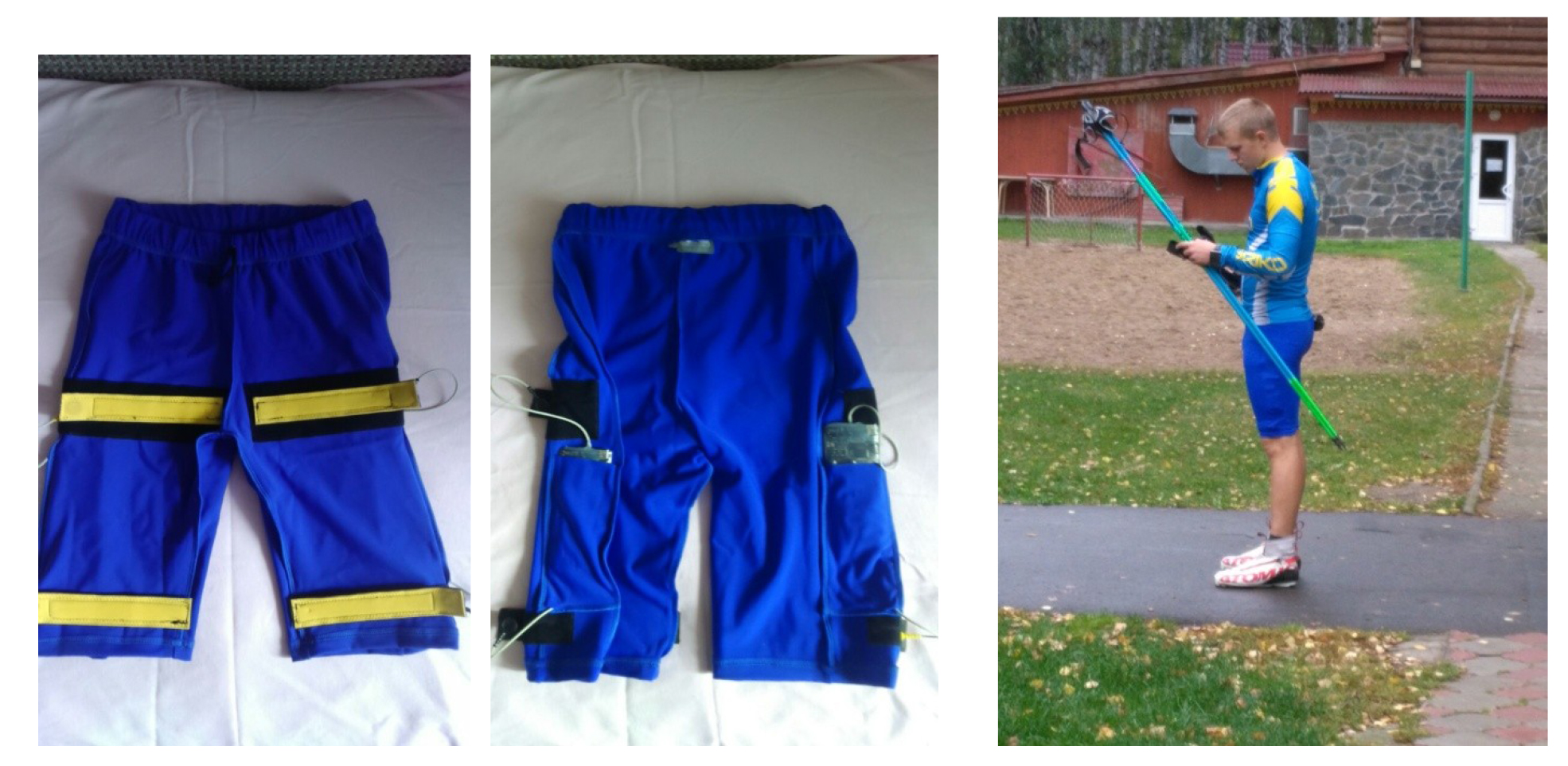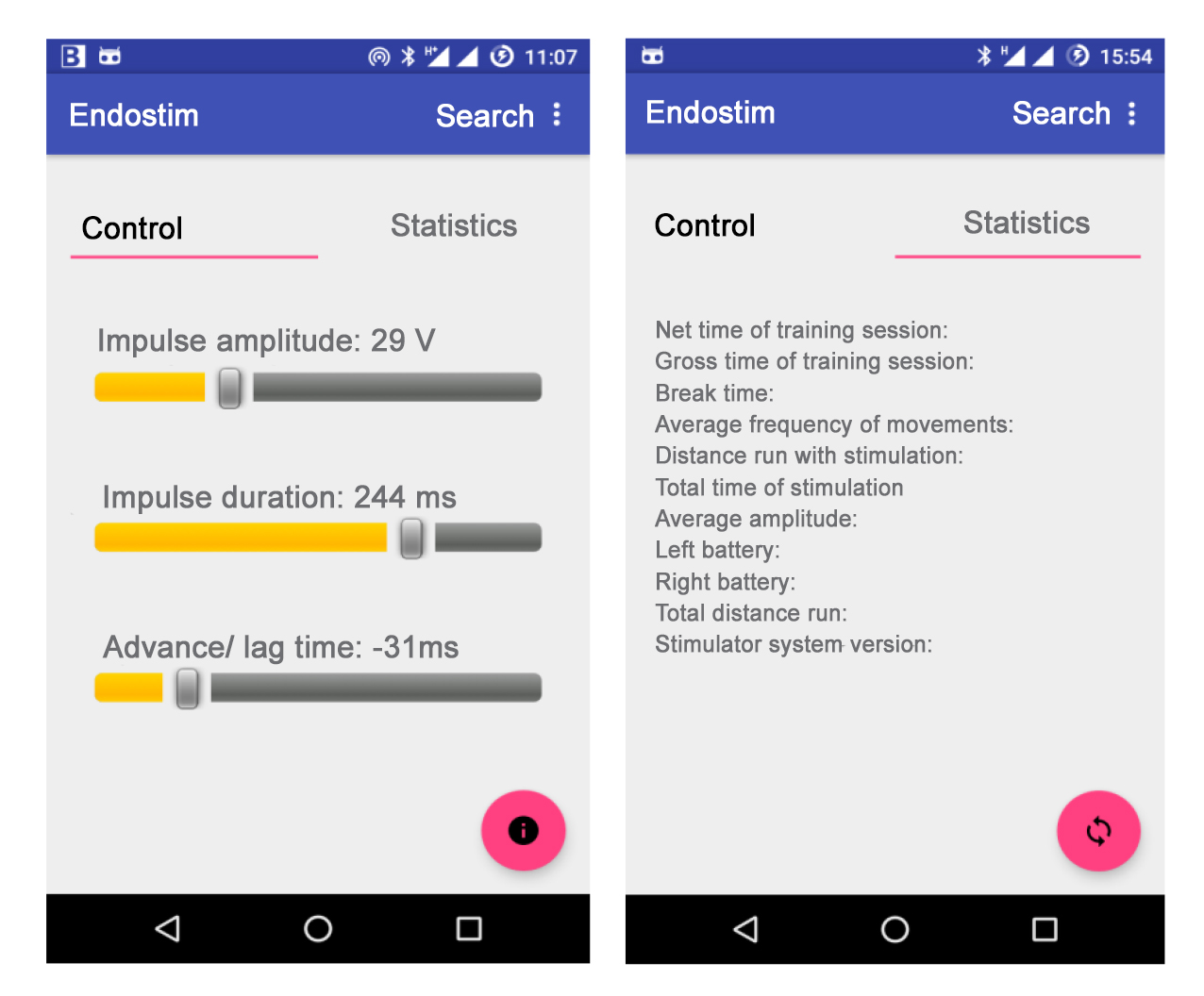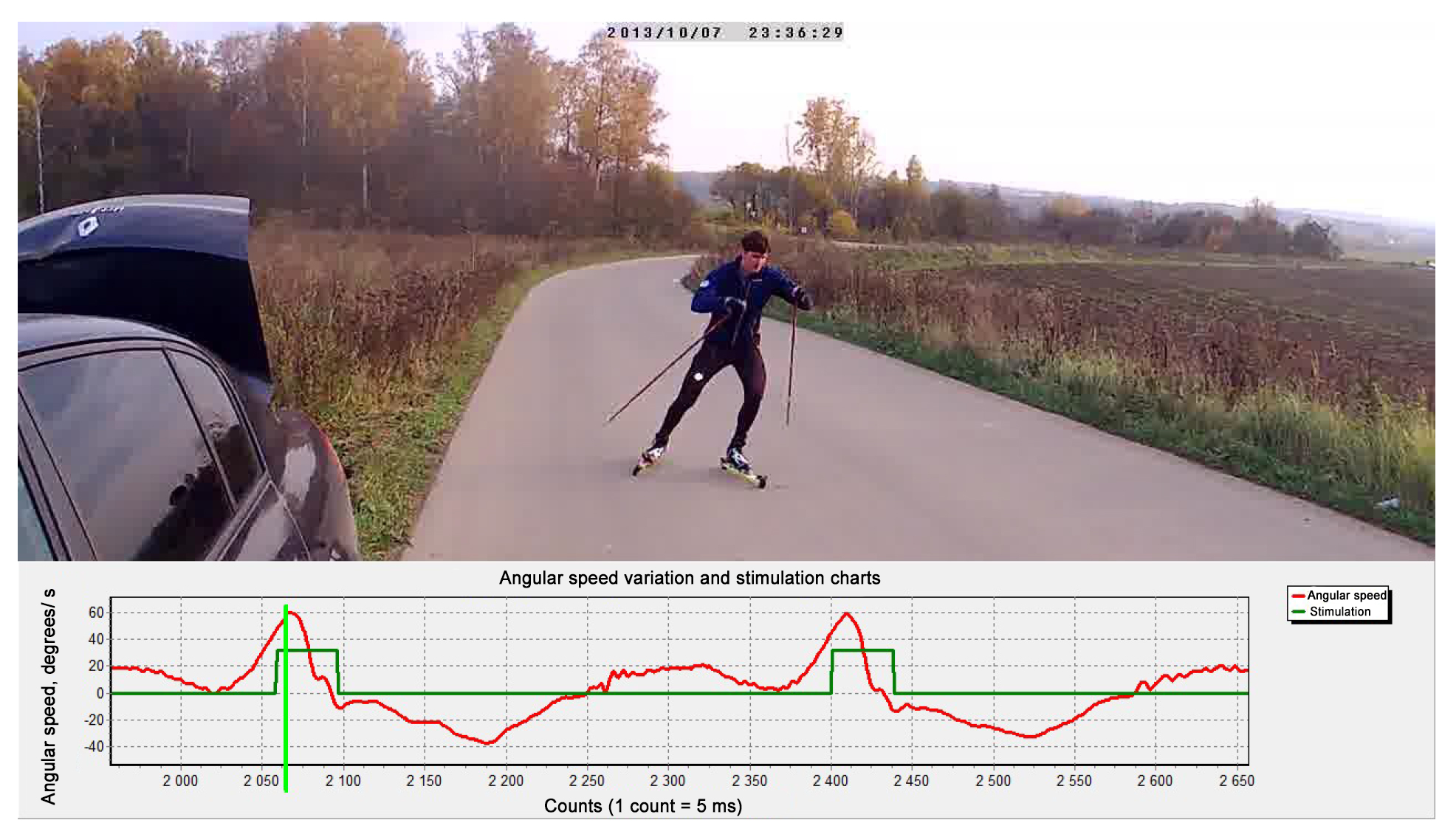Dynamic electrical stimulation for competitive progress: application technology and benefits
Фотографии:
ˑ:
Dr. Biol., Professor V.L. Rostovtsev1
PhD A.A. Grushin2
1National Research Institute of Physical Culture and Sport, Moscow
2 Russian Olympic Committee, Moscow
Keywords: dynamic electrical stimulation, cross country skiing, biathlon, ice skating, running, walking, competitive success, training, short- and long-term adaptation.
Background. The high competitiveness and narrow margin between competitive successes and defeats in modern sports force sport analysts look for new efficient auxiliary training tools, and these efforts are often quite beneficial. High accomplishments in modern elite sports may come only when the modern highly efficient training systems are supported by due progress control tests providing the relevant and accurate process data, plus an extensive toolkit of untraditional auxiliary training methods is applied. It is through the annual training cycle being designed to include an adequate set of athlete’s physical progress rates and reference check points plus a set of efficient main and auxiliary training tools duly designed and managed that a good competitive success in the top-ranking events may be achieved. It was based on the above considerations that we have developed and described herein the design and key benefits of the Dynamic Electrical Stimulation System (DESS) that is one of a few tools of direct effect on competitive success.
Objective of the study was to develop a computerized Dynamic Electric Stimulation System (DESS) with its mobile version followed by the system test to demonstrate its benefits as an auxiliary athletic training tool.
Methods and structure of the study. The DESS is designed to activate the core muscle groups (viewed as a key functional link) at the moment of their maximum tension during the physical exercise. Key functional link (KFL) is the muscle group that makes – in the certain time interval of the exercise when the tension reaches its peak – a maximal contribution to the physical process goal – or, as was stated by P.K. Anokhin, developer of the theory of functional systems (that we applied to design the DESS) – the “desired result” being achieved [1]. It was largely based on this theory and the materials to substantiate the novelty of our design [8] that the DESS method was designed. The key functional link (KFL) in the subject sport disciplines is the moment of the leg extension in the knee joint with the musculus quadriceps femoris acting as the core muscle group in the process.

Figure 1. Contact points for the electrical stimulation system (1) and electrodes (2) to stimulate musculus quadriceps femoris
Professor I.P. Ratov was the first to apply an electrical stimulation system in sports [6]. The first version of DESS was tested in the cross country skiing sport in the second half of the 20th century [6]. The system was designed using a few skin contacts and electric wires, with the electric impulses being generated by the leg pressing onto the support plate and transmitted to the knee joint extensor muscles of the take-off leg: see Figure 1.

Figure 2. Updated version of the DESS
Shown on the middle image of Figure 2 are the training trunks on the wrong side with special pockets for the sensor chips to read the thigh positions on the move, plus battery, microprocessor with the control software, radio unit, bluetooth module for communication with a smartphone, and the electrical stimulator unit as such. The pockets for the sensor chips are made on the outside surface of the thighs in between the hip and knee joints. Shown on the left image of Figure 2 are the electrodes buttoned to the sensor chips so as to be high and low on the musculus quadriceps femoris. Shown on the right image of Figure 2 is the athlete adjusting the system with the sensor chip and electrodes visible on the outside of the thigh.

Figure 3. Screenshots of the mobile Endostim version
Given on Figure 3 are two pages of the mobile Endostim (endogenous stimulation) version of the sensor control software with the controls to switch on/off the sensors and adjust the impulse amplitude, duration and timing (on the left image). The right image gives the final report of the training session and the battery status.

Figure 4. Sensor readings processed by the system software (red line) and the electric impulses (rectangular peaks on the green line)
Figure 4 shows the athlete roller-skiing in the “intelligent trunks” and receiving an electrical stimulation impulse to the musculus quadriceps femoris at the top point of the take-off movement. The system processes (every 5 ms) the sensor readings by the application software of our own design, with the stimulating impulse synchronized with a control flash lamp on the athlete’s thigh.
Table 1. Experiments and methods applied under the study
|
|
Study methods and stages |
Year |
Subjects |
Statistical methods |
Note |
|
1 |
Dynamic Electric Stimulation System piloting stage |
1983 |
2 elite racing skiers |
- |
System tests |
|
2 |
Educational process: process timing, monitoring, questionnaire survey, HR data, video capturing data collecting/ analyzing stage |
1985 - 1992 |
41 skilled racing skiers qualified Class I to Honoured MS |
Data significance rating by the Student criterion |
3 rounds of experiments |
|
3 |
Educational process: process timing, monitoring, questionnaire survey, HR data, biomechanical data collecting/ analyzing stage |
2010 - 2014 |
24 skilled racing skiers qualified CMS to MS; plus 10 biathletes qualified MS |
Data significance rating by the Student criterion |
3 rounds of experiments |
|
4 |
Laboratory tests: electromyography, video capturing, process timing, gas-analysing, HR data collecting/ analyzing stage |
1984 - 1985 |
7 skilled racing skiers qualified Class I to CMS |
Data significance rating by the Student criterion |
2 rounds of experiments |
The system was tested, studied and improved since 1983 till now (see Table 1), with 84 skilled racing skiers and biathletes (qualified Class I to Honoured Masters of Sport) of different age groups (16 to 30 years old) in total being subject to the tests for this period. The studies were designed to include classical educational experiments plus special biomedical tests in field and laboratory conditions.
Based on the study data and analyses, we have worked out the following recommendations for the DESS application:
- DESS-applying training sessions are recommended in the following cases: (1) to perform special conditioning of athletes for an upcoming event within the regular pre-season training cycle; (2) to improve target physical qualities within specific training modules; (3) and to facilitate the body recovery process after draining and long competitive periods and/or high-intensity physical loads;
- DESS performance improvement course is recommended to include 10 to 12 training sessions within a scheduled training cycle to be stopped 5 to 7 days prior to the competitions. A DESS rehabilitative course may include 1 to 10 sessions depending on the training/ rehabilitation process specifics; and
- DESS-applying performance improvement course is to be designed using intermittent and repeated training patterns; whilst the DESS rehabilitation course is to be designed in a monotonic format.
Study results and discussion. The studies have demonstrated the DESS technology being beneficial for every component of athletic performance and competitive progress. The DESS training with the musculus quadriceps femoris being stimulated on the skiing/ ski roller stride showed the following benefits [3, 7, 9]:
- Improvements of the physical qualities including: explosive strength rates (in the take-off movement phase) grew on average from 8 to 13%; endurance rate grew by 1.5-3% (measured by the Anaerobic-Threshold-matched speed at the 10 km distance); speed by 3.3% (measured by 20 attempts in the 100 m uphill ski-roller sprints with/ without DESS).
- Oxygen consumption reduction by 2.3-4.5% on average in the ski-roller races at the Anaerobic-Threshold-matched speed; with the HR Cost (HRC) reduction by 6.4% (HRD = HR / (V х 60), beat per min [10]).
- The electric activity of the stimulated muscle group was found to grow by 14.3% on average, with the associating growth of electric activity in other non-stimulated muscle groups synergized with musculus quadriceps femoris and actively contributing to the movement sequence – by 6.1-6.7%. At the same time the muscles non-contributing to the active movement sequence were tested with the electric activity reduction in the cycle (indicative of their better relaxation) by 6.5-7.1%.
- Overall improvement in the energy costs of the athlete’s functions as verified by the oxygen consumption rate falling at the Anaerobic-Threshold-matched speed associated with the HR Cost per meter reduction.
- Short- and long-term adaptation rates, with the first positive changes in the key special fitness rates including the integrated fitness criterion (i.e. competitive success rate) notable after 5 DESS-applying training sessions; and with the positive effects achieved after 10 DESS training sessions being maintained for 17-20 days. In the 10 km races, benefits of the DESS training sessions were manifested by the competitive success rate improvements by 18-28 seconds.
Given in Table 2 are the consolidated data to demonstrate variations of the key special fitness rates after the DESS-application. The relative oxygen consumption and HRC rates were obtained at the standard movement speed (i.e. the Anaerobic-Threshold-matched speed for the group). These rates plus the HRC per 1 track meter were used to rate the energy costs of the athlete’s performance. The electrical activity data for the musculus quadriceps femoris at the take-off (QTO) and free slide (QFS) moments; broadest muscle of back at take-off (BMTO) and free slide (BMFS) moments; the musculus biceps brachii at take-off (BBTO) moments; and the musculus triceps brachii at take-off (BTTO) moments were indicative of the positive effects of the DESS application to the musculus quadriceps femoris as the key muscle group in the stereotyped skiing process. The DESS application was demonstrated to facilitate the combined (reciprocal) interaction of the muscle groups [5]. As demonstrated by the Table 2 data, the muscle groups actively contributing to the skiing stride show performance improvements as verified by their electrical activity rates; whilst the muscle groups that should relax and recover in the movement sequence showed deeper relaxation under the effect of the DESS. The same was true for the musculus quadriceps femoris in the free slide phase when it is relatively passive. Variations of the biomechanical rates in the free slide phase were also indicative of the better bodily adaptation in the competitive process upon the DESS training course [9].
Table 2. Metabolic, haemodynamic and biomechanical process rates of the ski-roller’s classical stride performance prior to and after the Dynamic Electric Stimulation System application to musculus quadriceps femoris in the take-off phase
|
Performance rates |
Prior to DESS application |
After DESS application |
Difference |
||
|
VО2, ml/ min per kg |
43,3 |
39,9 |
-3,4* |
||
|
HR, bpm |
177,9 |
172,7 |
-5,2* |
||
|
Electrical activity, mkV |
BTO |
280,0 |
314,1 |
34,1** |
|
|
BFS |
180,1 |
173,5 |
-6,6* |
||
|
BMTO |
265,2 |
270,2 |
5,0 |
||
|
BBTO |
225,0 |
218,7 |
-6,3* |
||
|
BTTO |
163,5 |
180,0 |
16,5* |
||
|
Stride length, m |
2,16 |
2,30 |
0,14* |
||
|
Stride frequency, Hz |
1,47 |
1,53 |
0,06 |
||
|
Take-off time, s |
0,26 |
0,21 |
-0,05 |
||
|
Free slide time, s |
0,41 |
0,44 |
0,03 |
||
|
Speed, m/s |
3,19 |
3,52 |
0,33** |
||
Note: * р ≤ 0.05, ** р ≤ 0.01
Conclusion. Modern version of the DESS technology may be applied in virtually every sport discipline where the musculus quadriceps femoris plays the role of a key functional link (KFL) being one of the most powerful muscle groups. The proposed DESS technology may still be improved both in the hardware (for example, in the bioelectrical activity registration sensors application details) and software domains.
References
- Anokhin P.K. Ocherki po fiziologii funktsionalnykh sistem [Essays on physiology of functional systems]. Moscow: Meditsina publ., 1975.
- Gryunovas A.P. Vliyanie vosstanovitelnykh sredstv (elektrostimulyatsii myshts i passivnykh dvizheniy stop) na perifericheskoe krovoobrashchenie u sportsmenov. Dis. kand. biol. nauk [The effect of rehabilitation means (electrical stimulation of muscles and passive foot movements) on peripheral circulation in athletes]. Kaunas, 1984.
- Ispytatelnaya gruppa po povysheniyu spetsialnoy podgotovlennosti sportsmenov s ispolzovaniem gipoksii i dinamicheskoy elektrostimulyatsii: itogovy otchet po dogovoru OKR N 286 - 2013 ot 12 avgusta 2013 g. na vypolnenie NIR, 2014 [Test group to improve athletes' special fitness using hypoxia and dynamic electrical stimulation. Final report on development contract no. 286 - 2013 of 12 August 2013, for research study, 2014].
- Kolesnikov G.F. Elektrostimulyatsiya nervno-myshechnogo apparata [Electrical stimulation of neuromuscular system]. Kiev: Zdorovje publ., 1977.
- Kotz Y.M. Elektrostimulyatsiya. Trenirovka i vosstanovlenie myshechnogo apparata, lechenie travm u sportsmenov [Electrical stimulation. Training and recovery of muscular system, treatment of injuries in athletes]. Moscow: Soyuzsportobespechenie publ., 1980.
- Ratov I.P. Issledovanie sportivnykh dvizheniy i vozmozhnostey upravleniya izmeneniya ikh kharakteristik s ispolzovaniem tekhnicheskikh sredstv. Avtoref. dis. dokt. ped. nauk [Study of sports movements and opportunities to change their characteristics using technical means. Doctoral diss. abstract]. Moscow, 1972.
- Rostovtsev V.L. Biologicheskoe obosnovanie tekhnologii primeneniya vnetrenirovochnykh sredstv dlya povysheniya rabotosposobnosti sportsmenov vysokoy kvalifikatsii. Avtoref. dis. dokt. biol. nauk [Biological substantiation of application technology vnetrenirovochnyh tools to improve elite athletes' performance. Doctoral diss. abstr. (Biol.)]. Moscow, 2009.
- Rostovtsev V.L. Sposob upravleniya parametrami dvigatelnogo stereotipa fizicheskogo uprazhneniya i ustroystvo dlya ego osushchestvleniya: patent # 2546421 [Method of control of parameters of movement patterns of physical exercise and device for its implementation: Patent no. 2546421]. Moscow, 2015.
- Rostovtsev V.L. Primenenie vspomogatelnykh sredstv v podgotovke sportsmenov vysokoy kvalifikatsii [Use of aids in training of highly skilled athletes]. Vestnik sportivnoy nauki, 2014, no. 1, pp. 15-20.
- Utkin V.L. Izmereniya v sporte: Vvedenie v sportivnuyu metrologiyu [Measurements in Sports: Introduction to sports metrology]. Moscow: SCOLIPC publ., 1978 .
- Cabric M. Stereological analysis of capillaries in electrostimulated human muscles. Int. J. Sports Med. Oct; 8(5). 1987. P. 327–330.
- Carraro U. ‘Modulation of trophim and fiber type expression of denervated muscle by different patterns of electrical. BAM. Vol 12(6). 2002. Р. 263-272.
Corresponding author: rost.177@yandex.ru
Abstract
The article summarises the experience of dynamic electrical stimulation method application in an athletic training process. The study was designed on a phased basis since 1980ies till now and has demonstrated undoubted benefits of the method as verified by arrays of skiers’ performance data and the competitive success rates in cross country skiing and biathlon comprising an integrated progress indicator. A modern version of the method includes “intelligent trunks” equipped with sensors to record the thigh movements by spatial and temporal characteristics and rate individual competitive fitness by a set of performance criteria with automatic registration of a variety of energy supply rates (physical, functional, cardiovascular, neuromuscular and hormonal ones) in the stereotyped movement sequence. The method gives the means to rate current special fitness, fix the moment of maximum tension of the musculus quadriceps femoris and apply the electrical stimulation impulses to the muscle group in the push-off phase. At the present juncture, the method is applicable in a variety of versions: for ski rollers, skies, skiing stride mimicking run practices, exercise bicycle and racing bicycle, roller and classical skates and in running, walking and jumping practices.




